In the world of digital marketing, businesses are always looking for ways to boost conversions in relation to the visitors who show initial interest but don’t always complete the desired action. This is where retargeting ads come into the game. Retargeting, also known as remarketing, is an advertising strategy that aims to re-engage visitors who have interacted with your brand but didn’t convert, encouraging them to return and complete the conversion process. Whether it’s making a purchase, filling out a lead form, or signing up for a service, retargeting ads help you capture lost leads and push them down the sales funnel.
In this blog post, we’re going to cover how to effectively use retargeting ads for lead generation, some strategies to set up retargeting campaigns across different platforms such as Google and Facebook, and finally best practices for crafting compelling retargeting ads that turn potential customers into loyal ones.
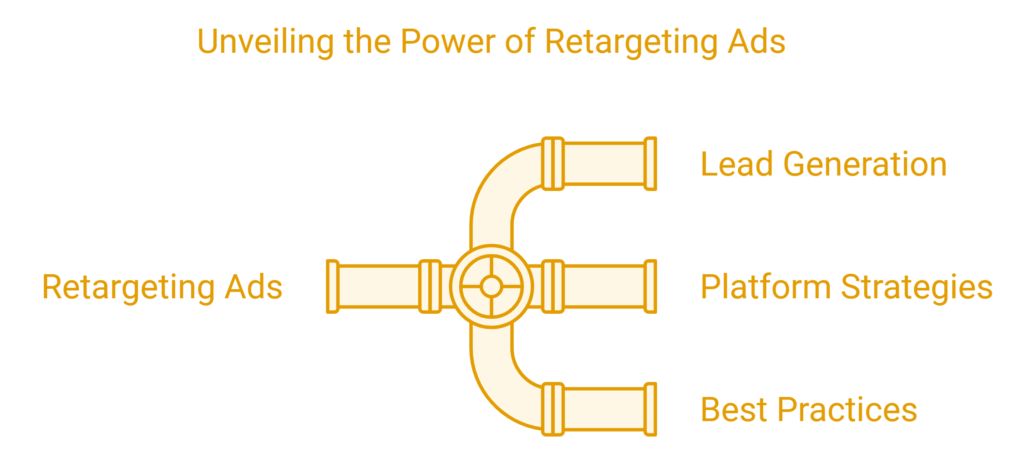
What Are Retargeting Ads?
Retargeting ads are the form of online advertising that targets users who had once visited your website or interacted with your brand in some way but didn’t complete a desired action. The retargeting ads follow users on various websites, social media, and other digital spaces, reminding them about your product or service so that conversion chances improve.
The core aspect of retargeting is the delivery of targeted ads to users about their past behavior. For example, if an individual viewed a product but left the store without buying it, they will be served targeted ads of that particular item or similar items to encourage return visits to finish buying.
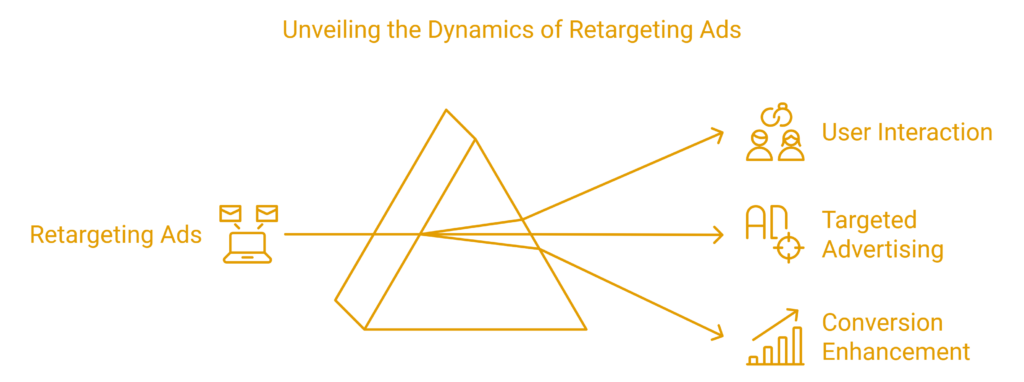
Why are retargeting ads important for lead generation?
- Higher Conversion Rates: Retargeted users are more likely to convert. They have already shown interest in your brand, so serving them additional, targeted ads increases the chances that they’ll return to complete the conversion process.
- Cost-Effective: Compared to attracting new visitors or leads, retargeting can be more cost-effective. You’re focusing your efforts on people who are already familiar with your brand and have expressed interest, which means a higher return on investment (ROI) for your advertising spend.
- Improved Brand Recall: Even if a visitor doesn’t convert immediately, retargeting keeps your brand top-of-mind. Showing your ads regularly on different platforms ensures that your brand is visible to potential customers, which will lead them back to your website later.
- Personalized Marketing: Retargeting will help personalize the advertisement to the user based on their behavior. Whether he has abandoned the cart, browsed specific products, or even visited a landing page, he can be served with relevant ads that meet his requirements.
- Reduced Abandonment: Sales are often lost because a visitor abandoned his or her cart or the site before completing the action desired. Retargeting lets you catch those visitors and drive them to finish their purchase or sign-ups.
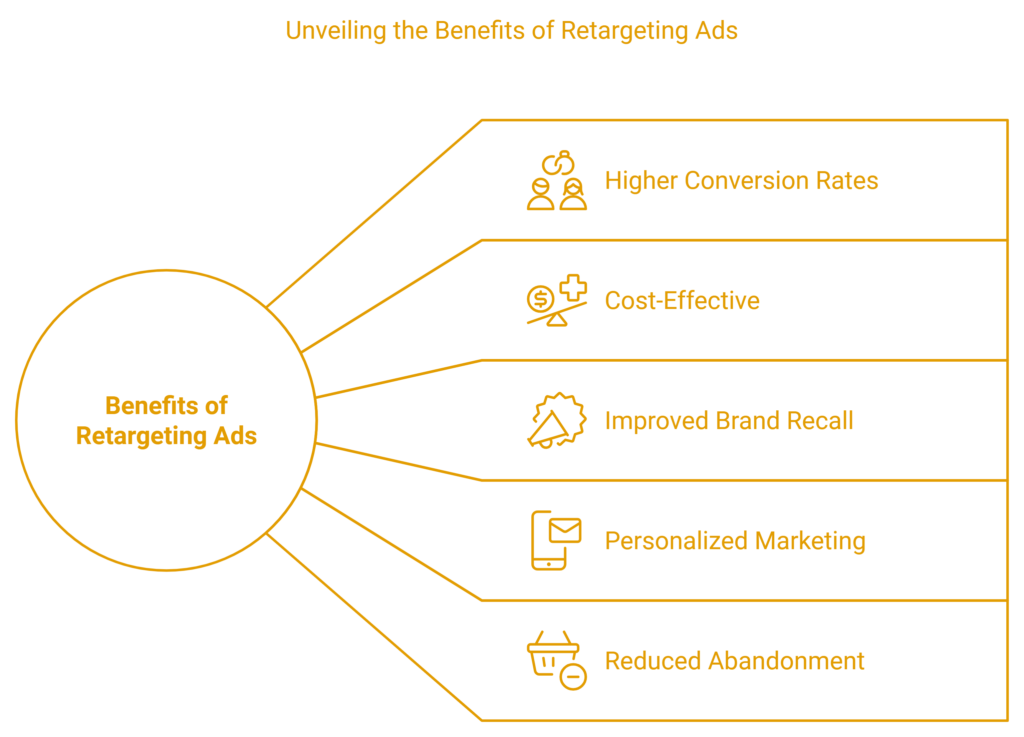
Types of Retargeting Ads
Retargeting ads fall under two primary categories: one based on user behavior and the other based on the type of platforms that you are using:
- Standard Retargeting: This is the simplest retargeting, where users who visited your website but did not convert see generic advertisements related to your brand. After having looked at your website, for example, a user may continue to see banner ads everywhere reminding them of your products.
- Dynamic Retargeting: Users are shown very targeted ads as a function of their actions. If a user browses for a certain product but does not make a purchase, they could be shown that same product or an analogous one while continuing to browse other sites.
- Email Retargeting: If a user subscribes to your email list but does not complete the desired action, such as buying, you can send personalized retargeting emails with offers, product recommendations, or reminders to complete their purchase.
- Social media retargeting: Through platforms such as Facebook, Instagram, and LinkedIn, businesses are allowed to retarget those who interact with the company’s content. Targeted advertising is very achievable in such places as people’s clicks, likes, and views can be targeted with adverts.
- Search Retargeting: This form of retargeting focuses on users who have searched for keywords related to your business but never converted. It is a great way to connect with interested potential customers who have not yet taken that next step.
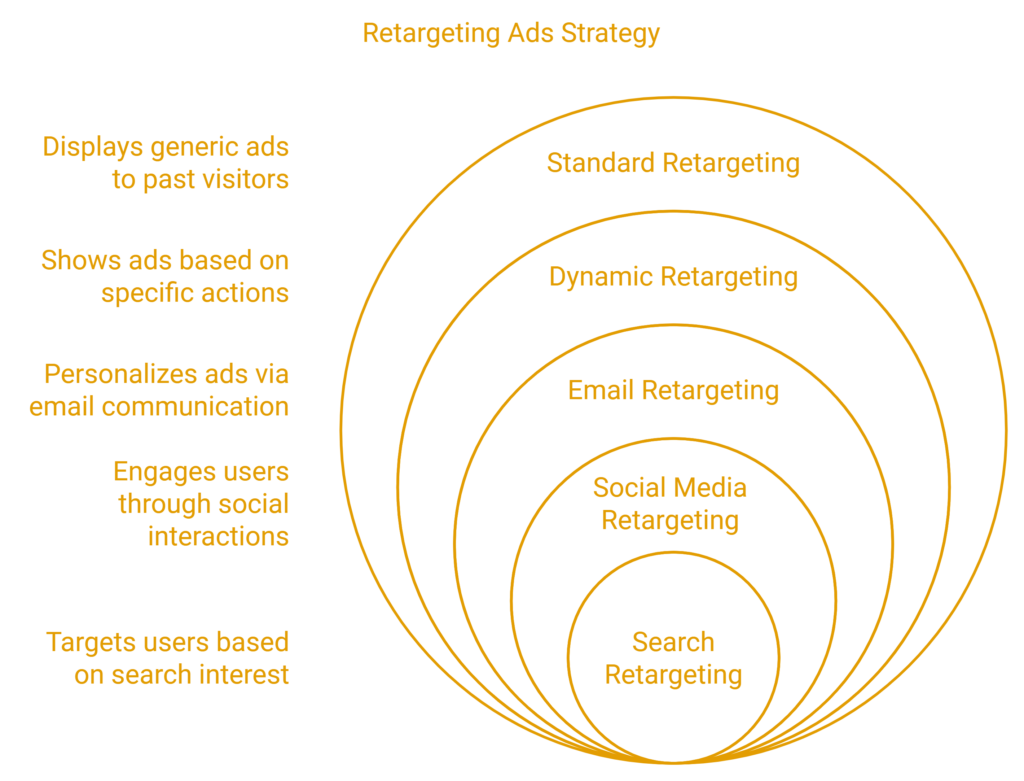
How to Set up Lead Generation Retargeting Ads
Now that we know what the importance and types of retargeting ads are, it is time to explore how to set up lead generation-focused retargeting campaigns.
1. Installing tracking pixels on your website
This sets the first stage of setting up retargeting ads: placing a tracking pixel on your website. This refers to small pieces of code issued by such advertising platforms as Facebook and Google. This pixel tracks all user activities on your website. This gives you the means to construct audiences based on user behavior.
For instance, Google offers a Google Ads Remarketing Tag and Facebook provides the Facebook Pixel. Both these tools help you track who visits your website, which pages they visit, and which actions they take, so you can serve relevant ads to them later.

2. Build Custom Audiences
After your tracking pixels are installed on your website, you can now start creating more customized audiences based on all the actions the users have on your website. Lead generation common audience streams include:
- Page Visitors: Users have visited your web pages but never did anything. These might be filling some lead forms or making payments.
- Product Viewers : The viewers who viewed any of the specific products present in your online store but fail to add it to their car.
- Cart Abandoners: Users who added items to their shopping cart but did not complete the checkout process.
- Leads with Low Engagement: Visitors who subscribed to your newsletter or downloaded a resource but have not interacted further.
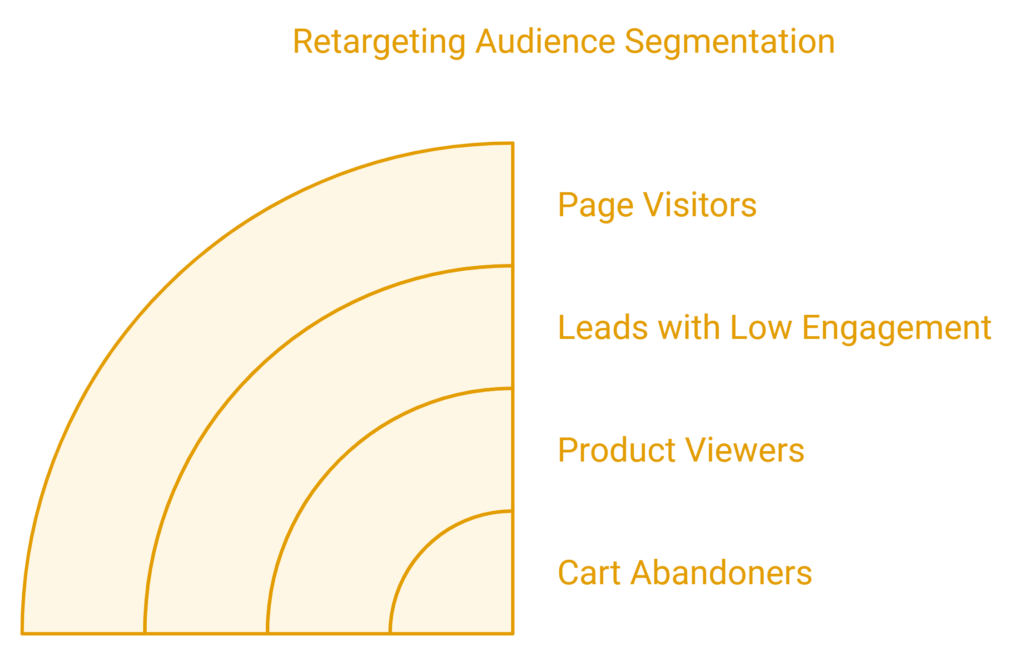
Each group can be targeted with ads customized to their interests and behavior. For example, an ad offering a discount or a reminder to complete a purchase for cart abandoners.
3. Create Engaging Ad Creatives
Compelling ad creatives are the backbone of effective retargeting ads. The key is to create ad creatives that capture the user’s attention and prompt them to action. Here are some guidelines for creating effective ads:
- Personalization: Using dynamic retargeting to show users the product or service they viewed on your website. Personalized ads are more likely to resonate with users and encourage them to return.
- Clear Call-to-Action: Your ad should feature a strong, clear call-to-action (CTA). Whether it’s “Shop Now,” “Get a Discount,” or “Sign Up Today,” the CTA should prompt immediate action.
- Engaging Visuals: Make sure your visuals are high-quality and attention-grabbing. Images or videos of your products in use can create a sense of urgency or curiosity, prompting users to click on the ad.
- Offer Incentives: This could be in terms of discount, free trial or special content that could motivate a user to follow up with their action. For instance, one abandoned cart could easily return if provided with a 10% discount or free shipping.
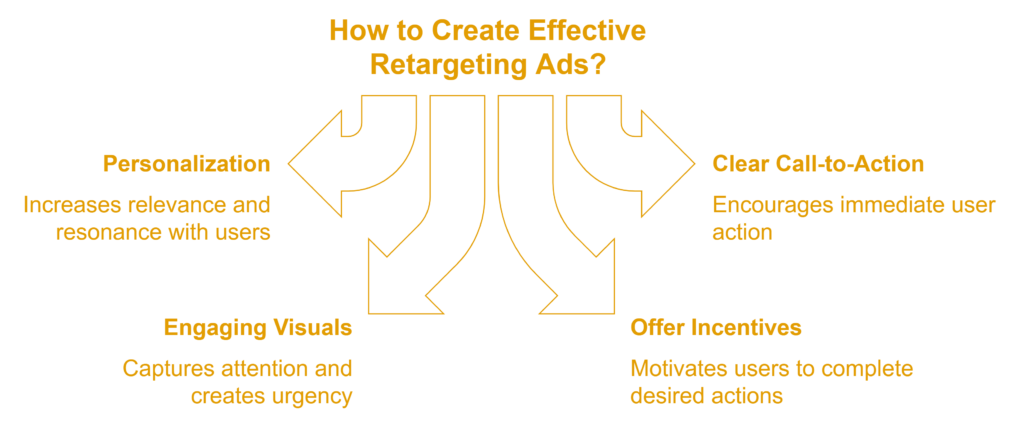
4. Pick the Right Platform
Retargeting can be done on most available platforms. However, there is always Google and Facebook which most people prefer using in this case. Here is how to maximize each platform
- Google Ads: Google offers both display and search retargeting. With Google’s huge network of partner sites, you can display your ads across a wide range of websites that your audience is likely to visit. Google also lets you target users based on their search behavior, which can be very effective in retargeting leads with specific intent.
- Facebook and Instagram Ads: Facebook has its feature of custom audiences by allowing the advertisers to target those users who have already visited the website or engaged with any particular page on Facebook or even Instagram. These are mostly best for mobile-based reach, and rich media format use, such as carousel ads and video ads, can be used.
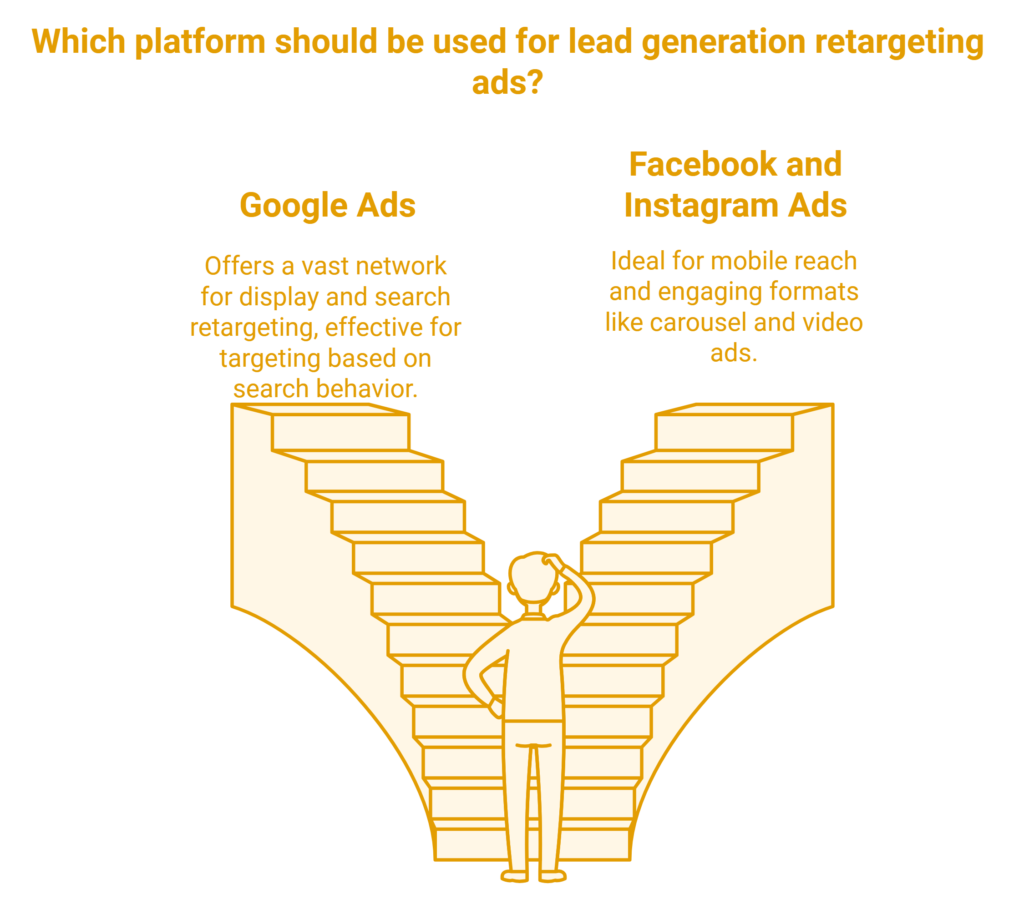
Mix platforms to reach your audience across several channels for the best likelihood that they will re-engage with your brand.
5. Optimize Frequency and Timing
One potential drawback of retargeting ads is ad fatigue. Exposing users to the same ad too many times results in them ignoring it altogether or even getting annoyed at the repeated exposure. Frequency and timing can be optimized against this.
- Frequency Caps: Limit the number of impressions a user sees your ad within a given time frame. For example, showing your ad three times a day is often enough to remind users without overwhelming them.
- Timing: Try different timing strategies. For instance, retarget users who abandoned their cart within a few hours to increase the chances of conversion. For users who visited your site but did not convert, you may want to follow up after a few days with a reminder or a special offer.
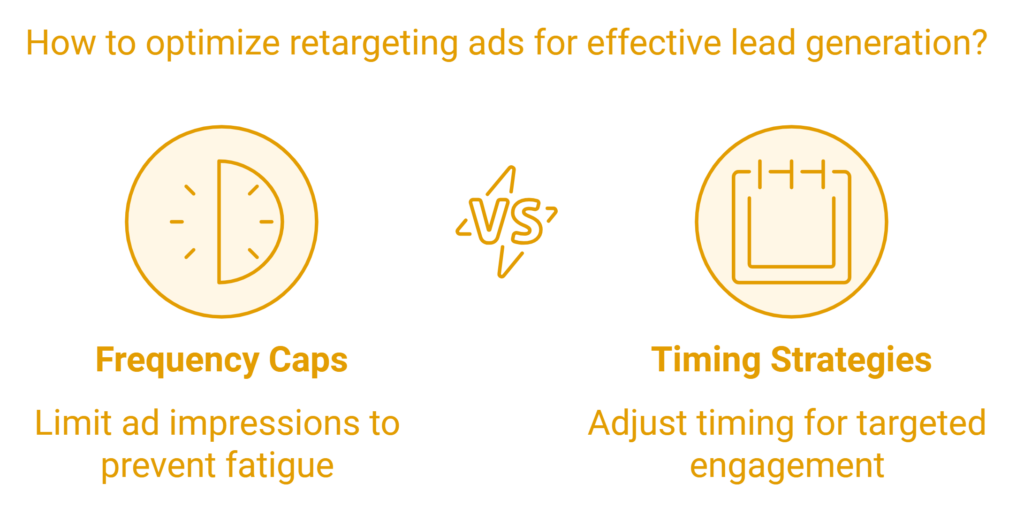
6. Test and Refine Your Campaigns
Like any digital marketing campaign, retargeting needs consistent optimization. You can find the winning combination by simply A/B testing different ad formats and creatives and audience segments for your retargeting efforts. Monitor your campaign performances regularly and refine your approach to improve results.
Common Retargeting Ad Mistakes to Avoid
- Over-exposure: Bombarding consumers with the same ad at repeated intervals can lead to ad fatigue. Make sure you vary your messaging and different creatives.
- Targeting the Wrong Audience: Ensure you’re targeting the right users based on their behavior. For example, don’t waste resources retargeting users who visited your site but didn’t show any strong intent.
- Lack of Segmentation: Not all users are the same. Segment your audience based on their behavior and tailor your messaging accordingly for better results.
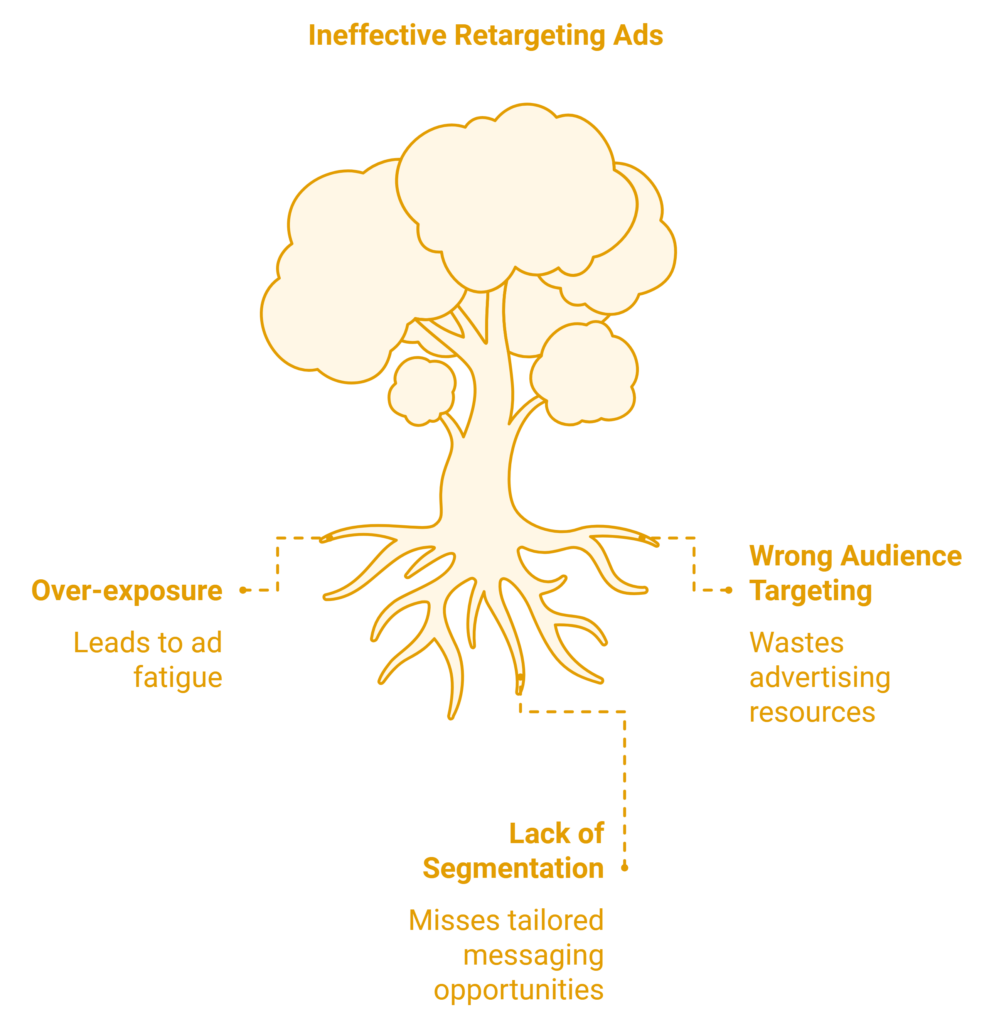
Conclusion
The lead generation through retargeting ads enables one to regain the lost leads and urge them to return to convert and finish the intended action. Maximize the opportunities to transform the visitors into customers through effective well-targeted personalized campaigns set across the Google and Facebook platforms. The key to success is creating compelling ad creatives, optimizing frequency, and continuously refining your strategy to ensure that your retargeting efforts yield the best possible results. With the right approach, retargeting ads can be an invaluable tool in your digital marketing arsenal. Check out The Role of Content Upgrades in Lead Generation